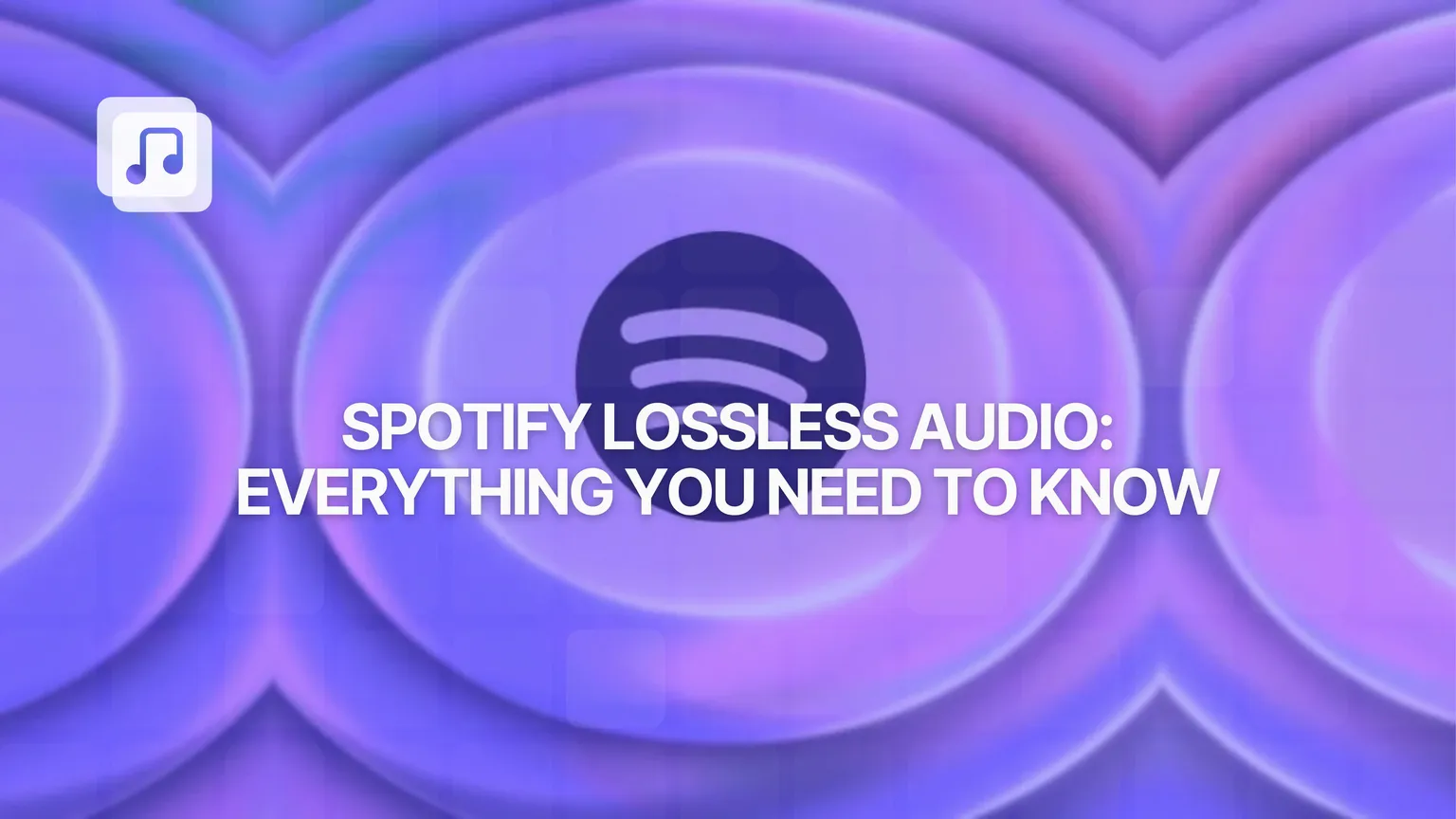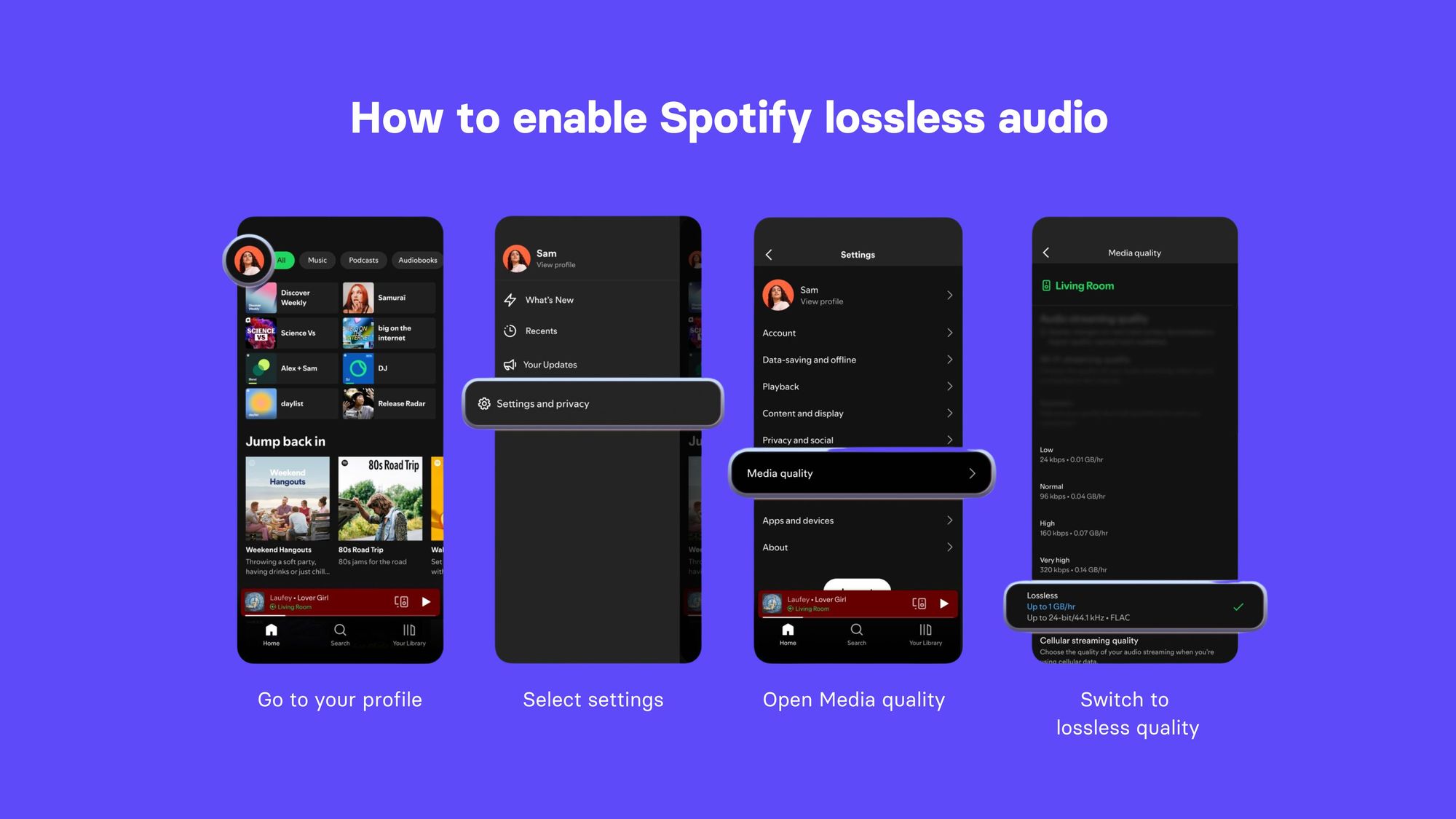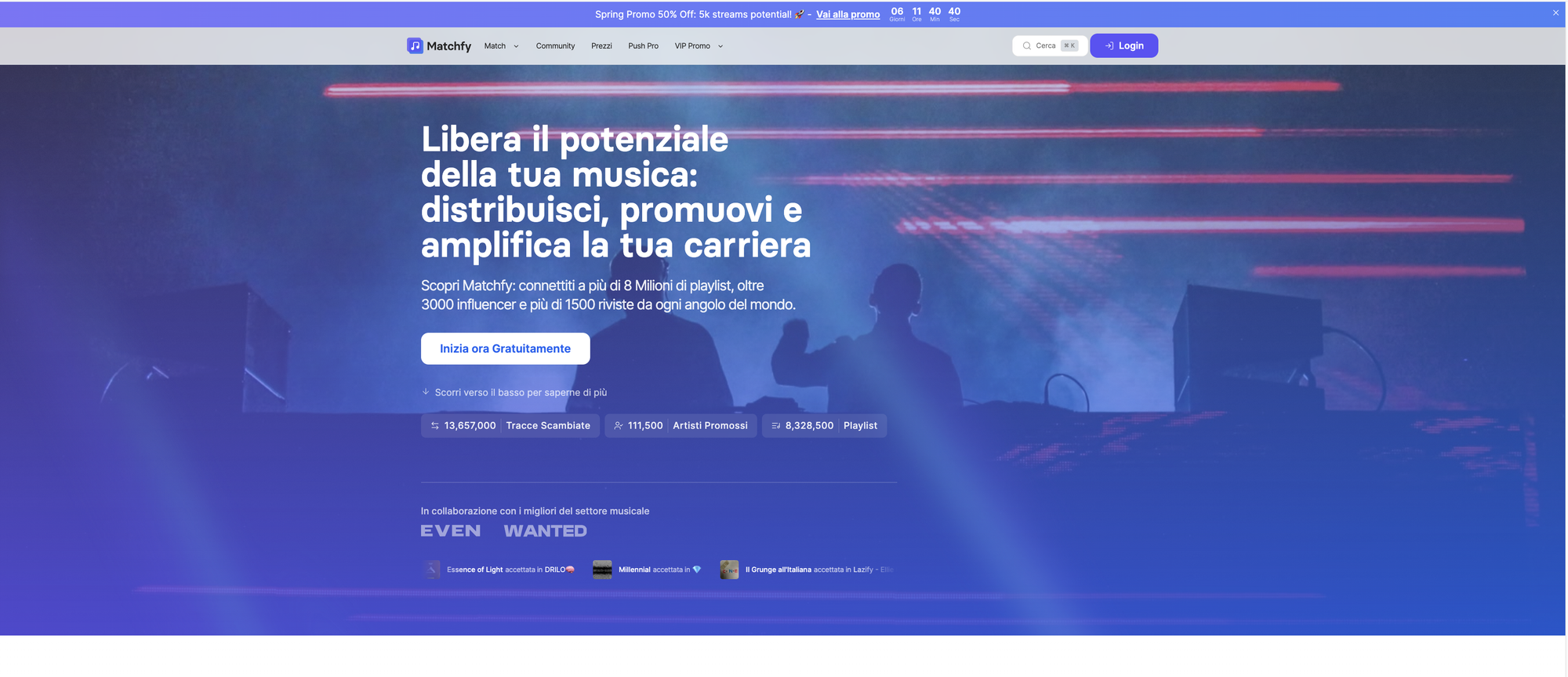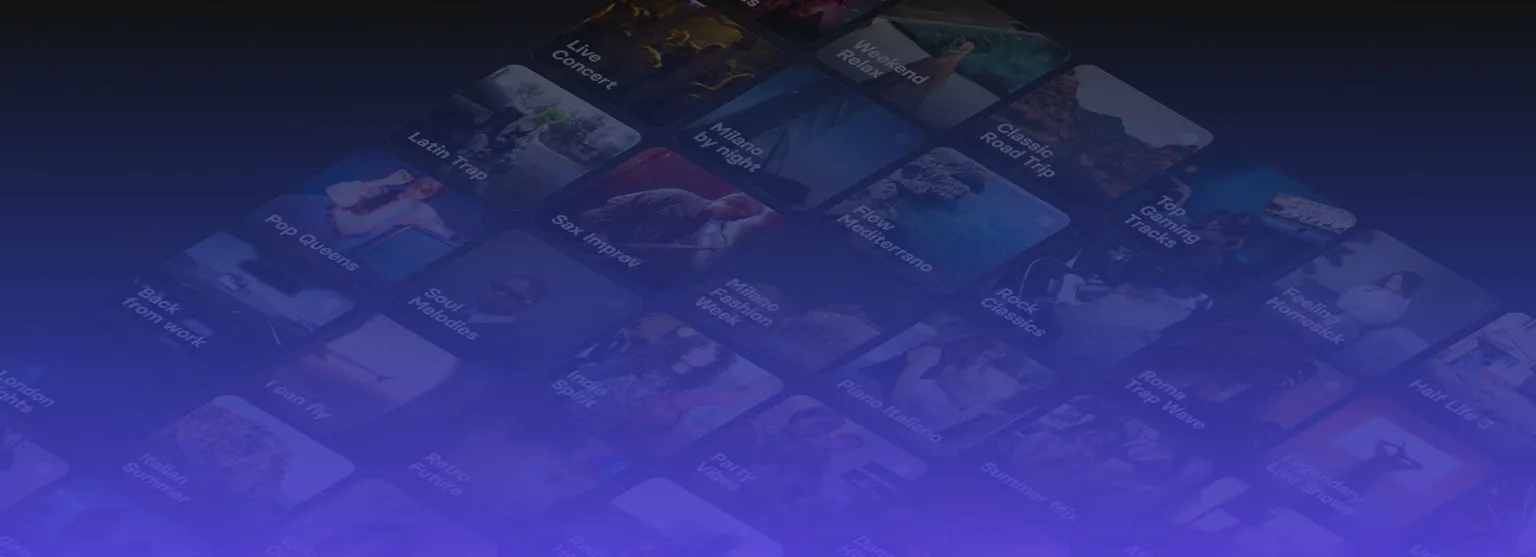
For years, Spotify has been the go-to platform for millions of listeners who want quick access to almost every song imaginable. However, when it came to sound quality, Spotify often fell short compared to competitors like Apple Music, Tidal, or Qobuz, which already offered lossless audio and even high-resolution streaming. That gap is finally closing.
Spotify has officially introduced lossless audio streaming for Premium subscribers, a feature that promises a richer, more detailed listening experience, one that gets much closer to how the artist originally intended their music to sound.
In this guide, we’ll cover everything you need to know about Spotify’s new lossless option: what it means, how to enable it, where it’s available, how it compares with competitors, its limitations, and why it matters for both listeners and musicians.
What we're going to explore:
- What exactly is lossless audio?
- Will you actually notice the difference?
- How to enable Spotify lossless
- Where is Spotify lossless available?
- How does Spotify compare to competitors?
- The limitations of Spotify lossless
- Why it matters for artists and producers
- The future of streaming and high-fidelity sound
What exactly is lossless audio?
To understand what makes Spotify’s upgrade so important, let’s break down the concept of lossless audio.
Most music streaming platforms until recently used compressed audio formats such as MP3 or AAC. These formats are called “lossy” because they shrink the size of the file by removing pieces of the audio that algorithms determine are less noticeable. This makes files smaller and easier to stream, but it also means some sonic details are permanently discarded.
Lossless audio, on the other hand, preserves every bit of information from the original recording. It’s like listening to a CD-quality file, where no elements are stripped away. Spotify has chosen the FLAC format at 24-bit / 44.1 kHz, which is widely considered a professional-grade standard.
In practical terms, this means:
- Music has greater depth and richness, especially in quiet or intricate passages.
- The dynamics of instruments and vocals are clearer and less “flattened.”
- There’s a more precise stereo image, giving a stronger sense of space and placement.
For listeners who care about detail and authenticity, this is a big step forward.
Will you actually notice the difference?
The million-dollar question: does lossless audio really sound better?
The answer depends on your setup and listening habits. If you’re using high-quality headphones, speakers, or a home audio system in a quiet environment, the difference is often noticeable. Subtle reverb, texture in instruments, or the breath in a vocal performance all become more present.
But if you’re listening on cheap earbuds, Bluetooth speakers, or in noisy settings like the subway, the difference may be much less apparent. Lossless audio won’t magically make poor speakers sound good.
Another important factor is Bluetooth. Even if Spotify streams lossless files, most Bluetooth codecs still compress the signal before it reaches your ears. To truly enjoy the full benefit, a wired connection or devices that support Spotify Connect are recommended.
So while not everyone will notice the upgrade immediately, for those who value sound quality, this is a meaningful improvement.
How to enable Spotify lossless
If you’re a Premium subscriber in a region where lossless audio is available, turning it on is simple.
- On mobile: Go to Profile → Settings & Privacy → Audio Quality and switch to “Lossless” for Wi-Fi, mobile data, or downloads.
- On desktop: Go to Preferences → Audio Quality and enable “Lossless.”
A small “Lossless” badge will appear in the “Now Playing” view when the feature is active, and you can also check real-time quality on Spotify Connect.
Keep in mind:
- You need to enable it separately on each device you use.
- Files are much larger, so it’s best to use Wi-Fi rather than mobile data.
- Lossless playback shines with wired headphones or a good speaker setup.

Where is Spotify lossless available?
As of now, lossless audio is being rolled out gradually. It’s currently available to Premium users in countries including the United States, UK, Germany, Japan, Australia, the Netherlands, Portugal, Sweden, Austria, Denmark, and the Czech Republic.
Spotify has announced plans to expand availability to 50+ more markets by October 2025.
If you don’t yet see the option in your app, don’t worry, it will arrive automatically once your region is included in the rollout.
How does Spotify compare to competitors?
With the arrival of lossless, Spotify is finally on par with other streaming platforms in terms of sound quality. Here’s how it stacks up:
- Apple Music: Offers up to 24-bit / 192 kHz lossless, at no extra cost.
- Tidal: Known for its “Master” tracks using the MQA format, plus standard FLAC lossless options.
- Qobuz: Specializes in hi-res audio with an extensive library available at 24-bit / 192 kHz.
- Amazon Music Unlimited: Offers “HD” and “Ultra HD” tracks similar to CD and hi-res quality.
Spotify’s main advantage is simplicity. Unlike Tidal, which separates lossless into pricier plans, Spotify includes it at no extra cost for all Premium users, aligning more closely with Apple and Amazon.
The company also claims that nearly its entire library will be available in lossless format, while some competitors only offer portions of their catalogs in high resolution.

The limitations of Spotify lossless
As exciting as this new feature is, there are a few caveats:
- Bluetooth bottleneck: unless you’re using wired headphones or speakers, most Bluetooth codecs still compress the stream, reducing the benefit of lossless.
- Higher data consumption: lossless files are significantly larger, which can drain mobile data quickly and cause buffering if your connection isn’t stable.
- Volume normalization: Spotify still applies normalization across tracks, which can reduce the natural dynamic range even in lossless playback.
- Source limitations: if a track was originally mastered poorly or uploaded in lower quality, lossless won’t magically improve it.
In short, while Spotify’s move is a huge upgrade, it doesn’t completely eliminate the technical realities of streaming.
Why it matters for artists and producers
This update isn’t just about pleasing audiophiles, it also matters deeply for musicians and producers.
With Spotify lossless, every choice made in the studio is more clearly represented. Subtle EQ adjustments, reverb tails, dynamic contrasts, and stereo positioning are preserved, allowing listeners to experience the music closer to the artist’s vision.
On the flip side, a poorly mixed or overly compressed track can sound worse when nothing is hidden behind lossy compression. In other words, high-quality production now matters more than ever.
For independent artists, this also highlights the importance of music promotion strategies. High-quality audio is essential, but so is reaching new listeners. Platforms like Matchfy help artists get placed on curated Spotify playlists, making it easier to stand out in a market where millions of tracks compete for attention.
By combining better production quality with smart promotion, artists can maximize the benefits of Spotify’s new lossless streaming.

The future of streaming and high-fidelity sound
Spotify’s introduction of lossless audio is more than just a feature, it’s a statement. It shows that the world’s most popular music streaming service is taking sound quality seriously, aligning itself with a growing demand for authenticity and depth in music listening.
For emerging artists, this future is also about visibility. While Spotify provides the platform, tools like Matchfy give musicians a practical way to expand their audience and find listeners who truly appreciate their sound.
Looking ahead, it’s possible that Spotify could expand into high-resolution streaming (beyond CD quality), or even introduce specialized features for audiophiles. But even now, this move makes high-quality audio more accessible and mainstream, not just a niche option for enthusiasts.
Conclusions
With lossless audio, Spotify has finally joined the ranks of platforms offering true high-fidelity music streaming. While it may not completely revolutionize the way everyone listens, it closes a major gap and gives millions of users access to richer, more authentic sound.
And for artists, this is a chance not only to deliver better sound but also to reach more people. By leveraging playlist promotion platforms like Matchfy, musicians can ensure their high-quality tracks are heard by the right audience.
Spotify lossless is here, and with the right strategy, it can be a game-changer for both listeners and creators.

